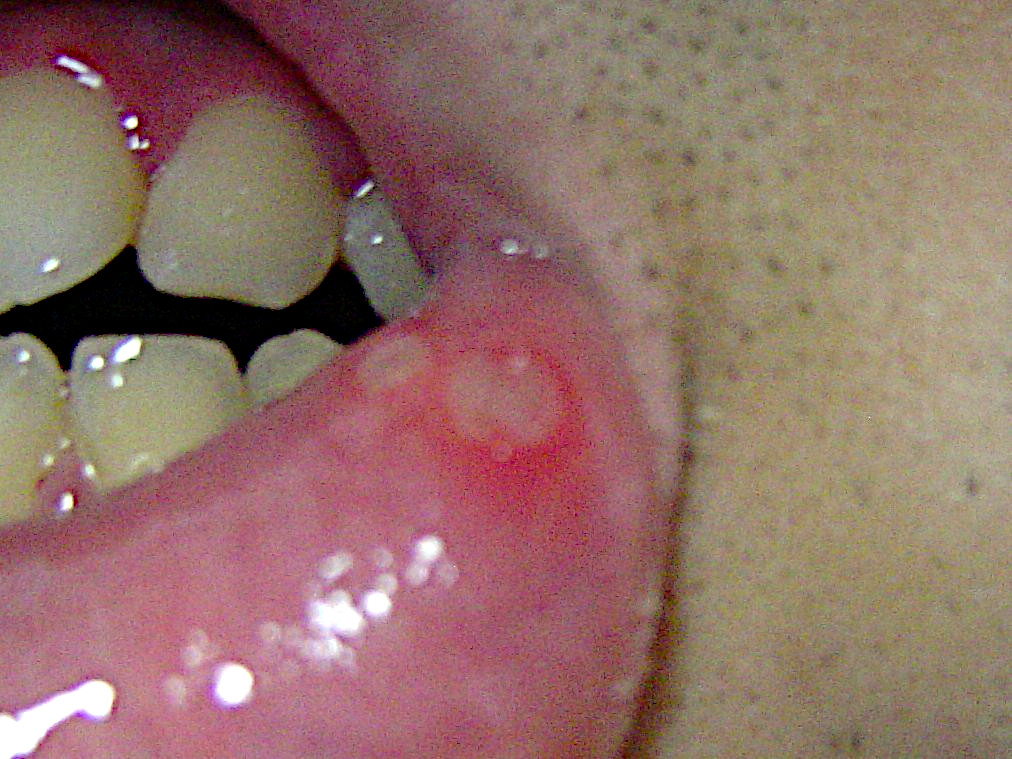|
Mouth Ulcer
A mouth ulcer (aphtha) is an ulcer that occurs on the mucous membrane of the oral cavity. Mouth ulcers are very common, occurring in association with many diseases and by many different mechanisms, but usually there is no serious underlying cause. Rarely, a mouth ulcer that does not heal may be a sign of oral cancer. These ulcers may form individually or multiple ulcers may appear at once (i.e., a "crop" of ulcers). Once formed, an ulcer may be maintained by inflammation and/or secondary infection. The two most common causes of oral ulceration are local trauma (e.g. rubbing from a sharp edge on a broken filling or braces, biting one's lip, etc.) and aphthous stomatitis ("canker sores"), a condition characterized by recurrent formation of oral ulcers for largely unknown reasons. Mouth ulcers often cause pain and discomfort and may alter the person's choice of food while healing occurs (e.g. avoiding acidic, sugary, salty or spicy foods and beverages). Definition An ulcer (; fro ... [...More Info...] [...Related Items...] OR: [Wikipedia] [Google] [Baidu] |
Aphthous Stomatitis
Aphthous stomatitis, or recurrent aphthous stomatitis (RAS), is a common condition characterized by the repeated formation of benign and non- contagious mouth ulcers (aphthae) in otherwise healthy individuals. The informal term ''canker sore'' is also used, mainly in North America, although it may also refer to other types of mouth ulcers. The cause is not completely understood but involves a T cell-mediated immune response triggered by a variety of factors which may include nutritional deficiencies, local trauma, stress, hormonal influences, allergies, genetic predisposition, certain foods, dehydration, some food additives, or some hygienic chemical additives like SDS (common in toothpaste). These ulcers occur periodically and heal completely between attacks. In the majority of cases, the individual ulcers last about 7–10 days, and ulceration episodes occur 3–6 times per year. Most appear on the non-keratinizing epithelial surfaces in the mouth – i.e. anywhere exce ... [...More Info...] [...Related Items...] OR: [Wikipedia] [Google] [Baidu] |
